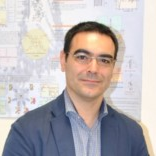Self-Aggregation in Supramolecular Systems
A special issue of Molecules (ISSN 1420-3049). This special issue belongs to the section "Physical Chemistry".
Deadline for manuscript submissions: closed (31 October 2020) | Viewed by 13822
Special Issue Editors
Interests: supramolecular chemistry related to porphyrin self-assembly and chirality; design of chiroptical probes for biomolecules conformations
Special Issues, Collections and Topics in MDPI journals
Special Issue Information
Dear Colleagues,
Self-organization is the driving force that led to the evolution of life, and supramolecular chemistry mimics reactions in natural systems (such as enzymatic reactions, assembling of multiprotein complexes, and other recognition reactions driven by noncovalent interactions) with the aim to exploit spontaneous organization to attain a reproducible bottom–up approach from molecular to supramolecular levels. Rationalization of the spontaneous self-assembly paradigm will offer tremendous potentialities to obtain a wide variety of complex systems, having specific functionality and properties.
The aim of the Special Issue “Self-Aggregation in Supramolecular Systems” is to explore the more recent chemical strategies to hierarchically manipulate the cooperative nature of weak interactions. Design and reproducible synthesis of molecular organization to supramolecular levels allows triggering structures and properties of supramolecular entities.
This Special Issue will collect interdisciplinary contributions focusing on the versatility and wide potentialities of self-assembled molecular nanosystems relevant for advancing new nanoscale functional materials having multiple applications in medicine, material chemistry, and biotechnology. Paper exploiting chiral building blocks to realize chiral supramolecular systems and highlighting the importance of supramolecular chirality in noncovalent self-assembled species will also be covered in this issue.
Prof. Dr. Alessandro D'Urso
Prof. Dr. Maria Elena Fragala
Guest Editors
Manuscript Submission Information
Manuscripts should be submitted online at www.mdpi.com by registering and logging in to this website. Once you are registered, click here to go to the submission form. Manuscripts can be submitted until the deadline. All submissions that pass pre-check are peer-reviewed. Accepted papers will be published continuously in the journal (as soon as accepted) and will be listed together on the special issue website. Research articles, review articles as well as short communications are invited. For planned papers, a title and short abstract (about 100 words) can be sent to the Editorial Office for announcement on this website.
Submitted manuscripts should not have been published previously, nor be under consideration for publication elsewhere (except conference proceedings papers). All manuscripts are thoroughly refereed through a single-blind peer-review process. A guide for authors and other relevant information for submission of manuscripts is available on the Instructions for Authors page. Molecules is an international peer-reviewed open access semimonthly journal published by MDPI.
Please visit the Instructions for Authors page before submitting a manuscript. The Article Processing Charge (APC) for publication in this open access journal is 2700 CHF (Swiss Francs). Submitted papers should be well formatted and use good English. Authors may use MDPI's English editing service prior to publication or during author revisions.
Keywords
- Noncovalent synthesis
- Hierarchical processes
- Supramolecular chemistry
- Self-assembled species
- Supramolecular materials
- Supramolecular chirality
- Biomimetic systems
- Functional nanostructures
- Macrocycle chemistry







